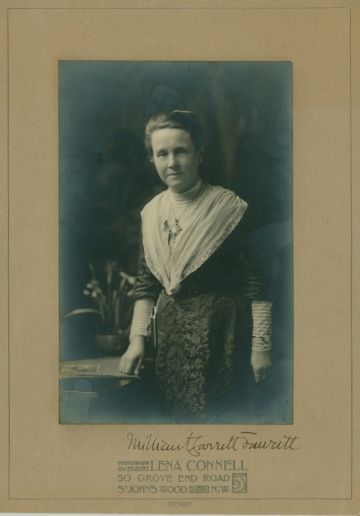Millicent Fawcett
The full resource is FREE to all registered users of the website
If you are not already registered you can sign up for FREE website access to download the full resource.

- Born: 1847
- Died: 1929
- Occupation: Women’s suffrage campaigner
- Claim to fame: Led the largest law-abiding suffrage society, the National Union of Women’s Suffrage Societies (NUWSS)
Millicent Garrett was born in Aldeburgh, Suffolk, the younger sister to Elizabeth Garrett Anderson. In 1867, Millicent married Henry Fawcett, a professor of political economy at Cambridge University. That year, she joined the first executive committee of the newly founded London National Society for Women’s Suffrage (LNSWS).
Millicent supported an increase in women’s access to education, helping to found Newnham College, Cambridge. She wrote biographies, articles and books on politics and economics.
She supported many feminist campaigns but believed that they should be kept separate to women’s campaign for suffrage.
Women’s suffrage campaigner
When the NUWSS was completely reorganised in 1907, Millicent became its president. Under Millicent’s leadership, the NUWSS became a powerful and innovative society. She helped to lead the NUWSS ‘mud march’ – a suffrage procession that took place in 1907 in London and inspired later, larger, more spectacular processions. A brilliant tactician, Millicent remained flexible on ideas and open to compromise, and was willing to adapt to changing situations as the campaign unfolded. From 1912, she worked closely with the Labour Party, when it became the first parliamentary party to endorse a separate woman’s suffrage bill. This contrasted with the WSPU leadership, who refused to work with any political party.
At the age of 66, in 1913, Millicent took part in the NUWSS Suffrage Pilgrimage, when women marched on Hyde Park from across the country – some walking all the way there from Carlisle. Millicent famously gave an impassioned speech in Hyde Park and took part in a deputation to the Prime Minister.
Millicent suspended NUWSS suffrage work to support the war effort in 1914, but kept the society ready to resume the cause. In 1917, Millicent and representatives from 24 suffrage societies took a women’s suffrage deputation to the new Prime Minister, Lloyd George. In March 1918, Millicent headed NUWSS celebrations when some women over 30 were granted the vote under the Representation of the People Act.
In 1919, Millicent retired from the NUWSS leadership, aged 71, but remained active in women’s international politics. In 1925, Millicent was created a Dame of the British Empire.
In 2018 a statue of Millicent was unveiled in Parliament Square. Millicent’s statue is the first of a woman to appear there.
Glossary
- The National Union of Women’s Suffrage Societies (NUWSS) – This acted as a large umbrella organisation for many hundreds of regional suffrage societies that shared its federation rules and values, including a commitment to law-abiding methods of campaigning. It had its own newspaper, The Common Cause.
- Feminist – a person who supports the idea of equal rights for women (on the same basis as men) in all areas of life on the basis of the equality of the sexes.
Questions
- Why do you think Millicent kept the women’s suffrage campaign separate from other feminist causes?
- What type of a role model was Millicent to other women then and now?
- Why is the title of the newspaper The Common Cause significant?
